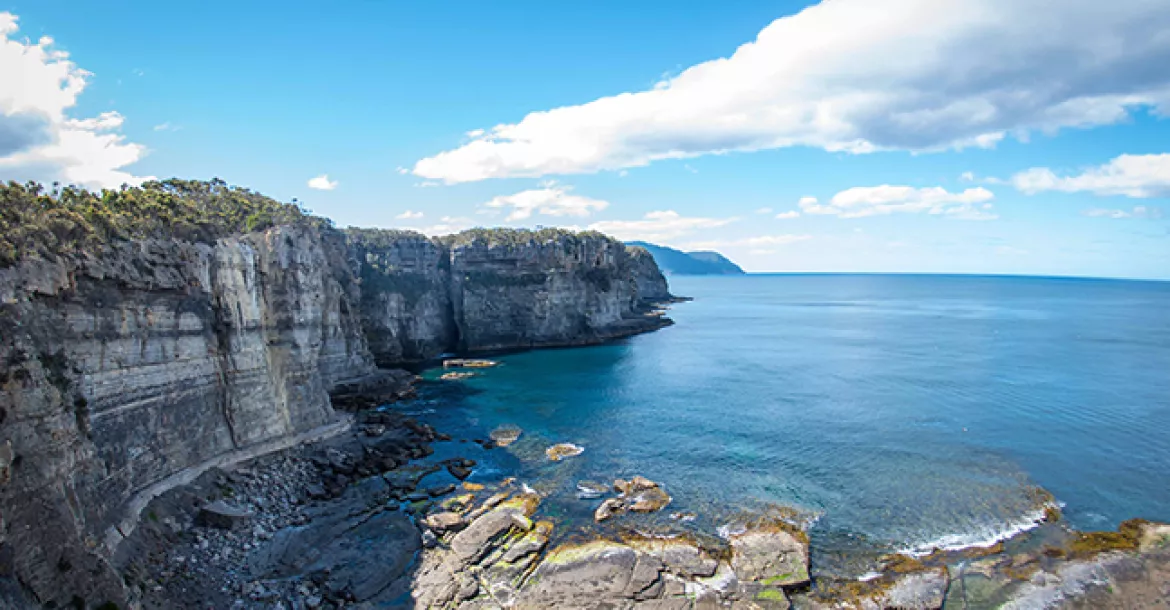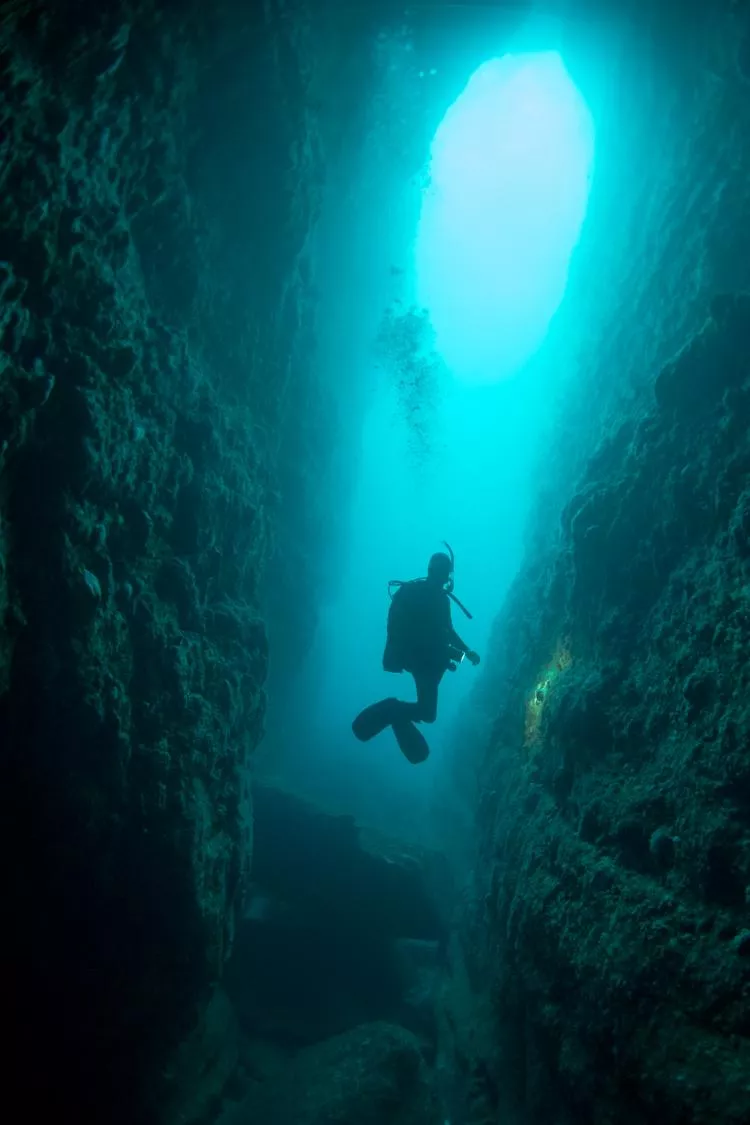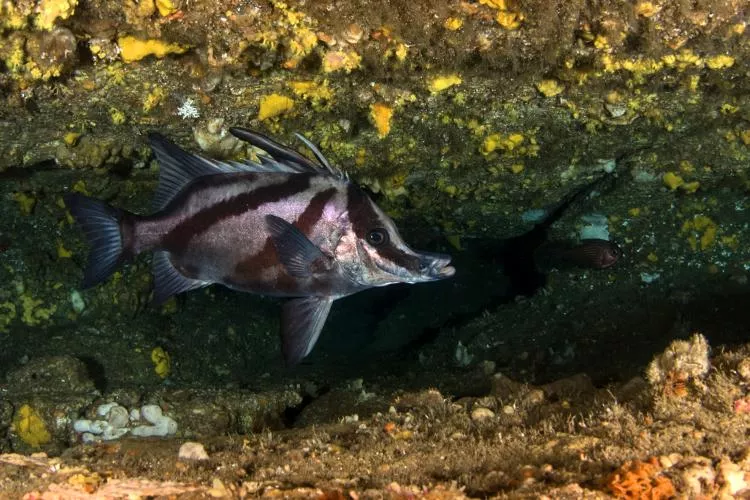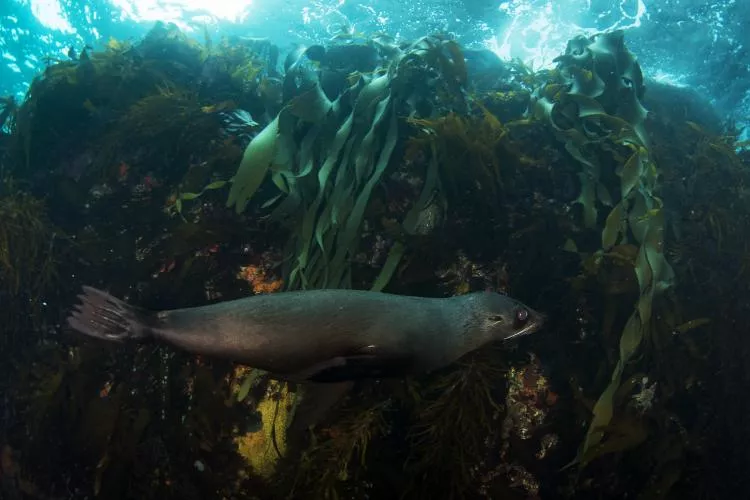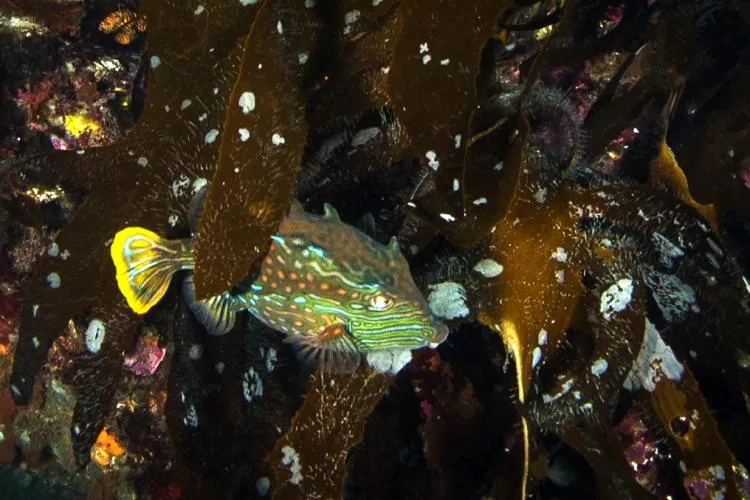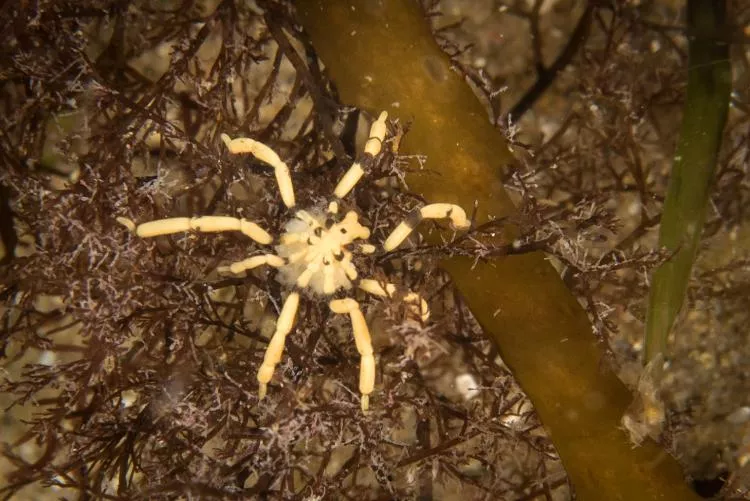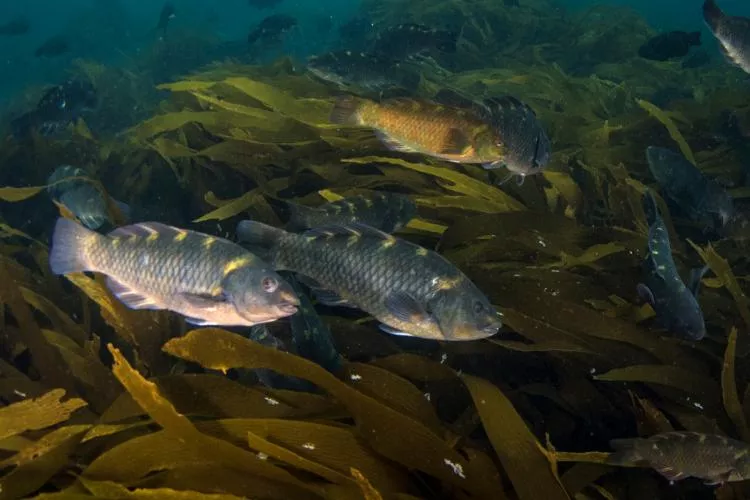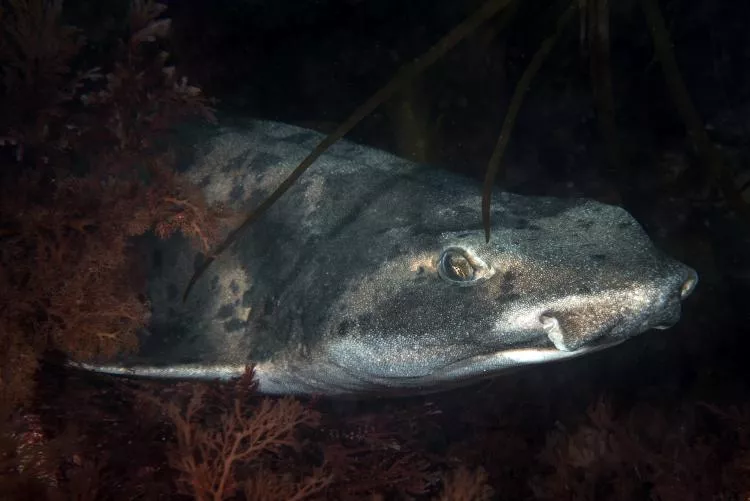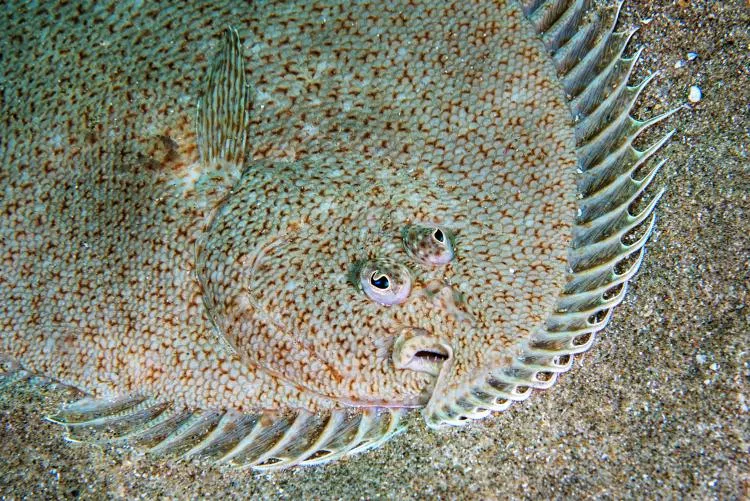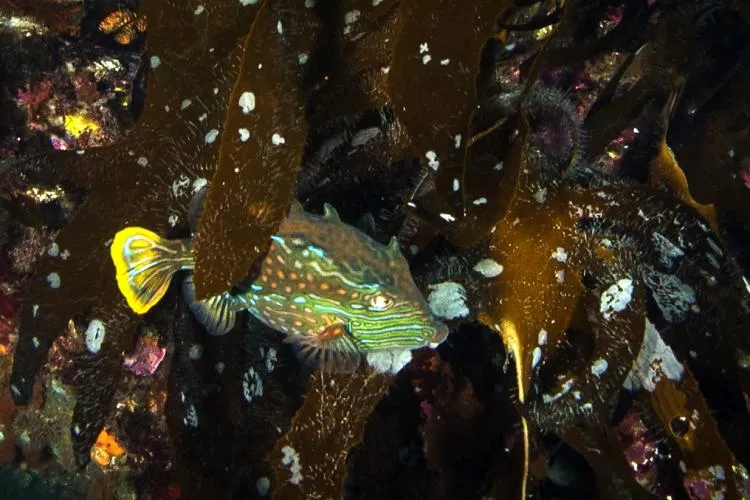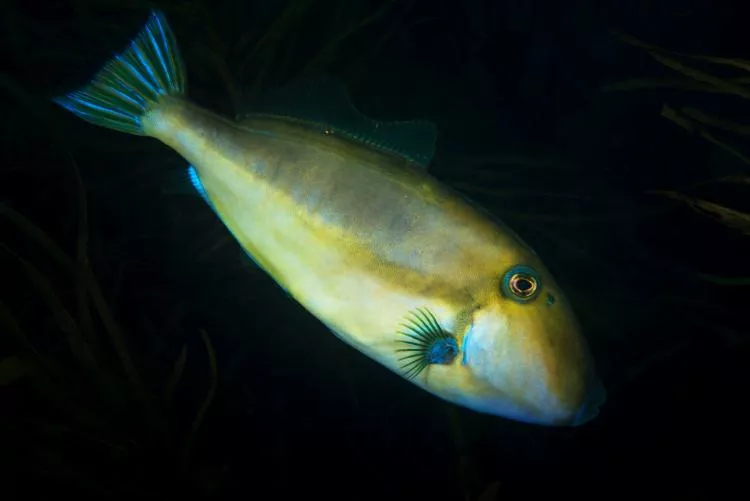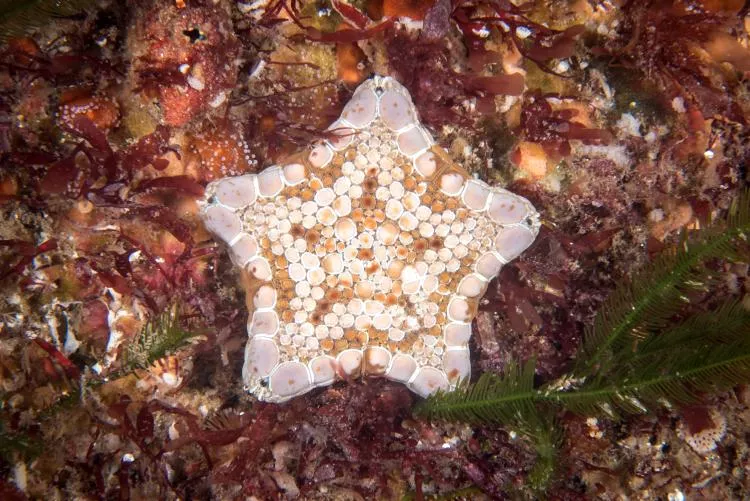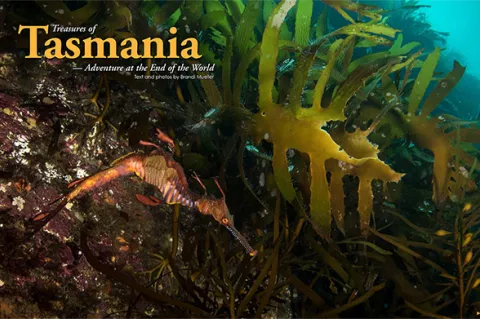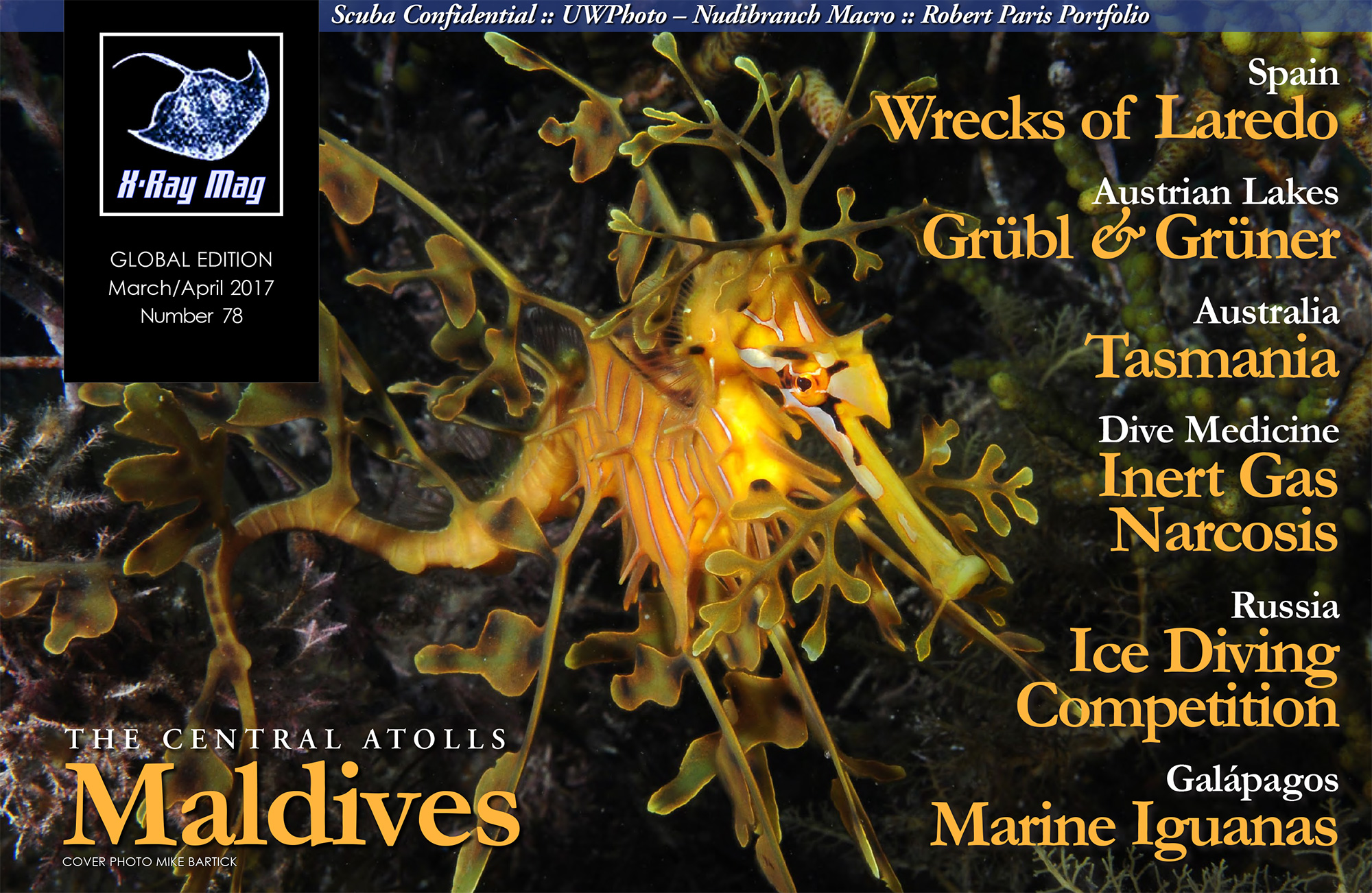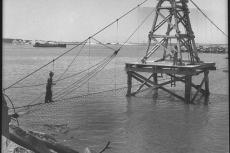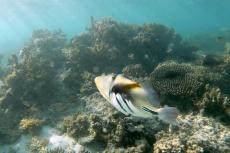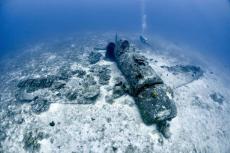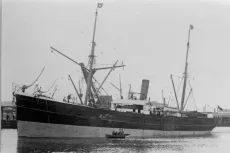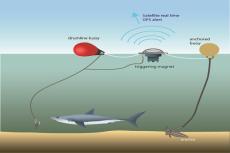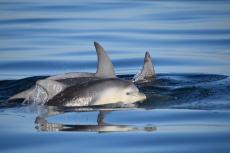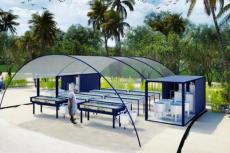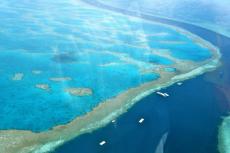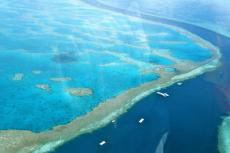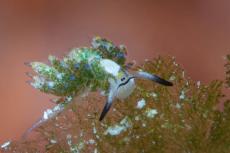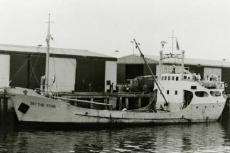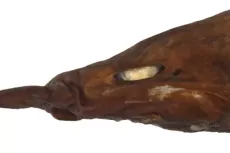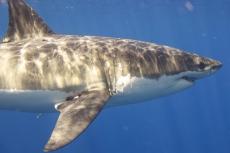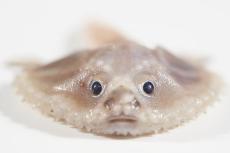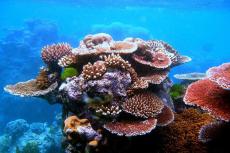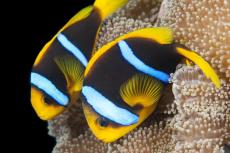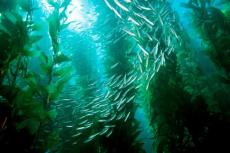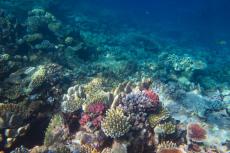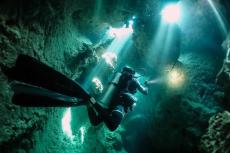There is an island at the bottom of the Earth playfully referred to as the end of the world, or the edge of the world, and if I did not know better, I could picture this to be true. Standing at the edge of some of the steepest cliffs in Australia on the Tasman Peninsula of southeastern Tasmania, I looked out over the steep, jagged coastline and the steel blue Southern Ocean. Although I knew the next bit of land south would be Antarctica, if the world were flat, I could easily imagine this to be the edge, where sailors would fall off a huge waterfall into a pit of dragons or something.
But wait. There really were dragons—right below me.
Contributed by
Factfile
Brandi Mueller is a PADI IDC Staff Instructor and boat captain living in the Marshall Islands.
When she’s not teaching scuba or driving boats, she’s most happy traveling and being underwater with a camera.
For more information, visit: Brandiunderwater.com.
The previous day, I was at the other end of these cliffs and 10m underwater, getting my first glimpse of weedy seadragons, a unique and strangely beautiful marine organism endemic to southern Australia. Although not fire-breathing, these fantastic creatures are related to the seahorse family and have evolved to look just like the kelp near which they live, with leaf-like extensions along their body. Tasmania—and Australia, as a whole—are known for amazing, if not slightly strange, wildlife both above and below the surface of the sea. I was lucky enough to spend two weeks exploring the oft-bypassed island of Tasmania.
Tasmania
Not too long ago, if you told anyone you were going to Tasmania, they would give you a funny look and ask, “Africa?” “Is that a country?” or “Where?” Even mainland Australians would laugh and ask why you were going there, as it was the land of people with two heads and there was “nothing to do there.” But lately, Tasmania has come into its own and become an eccentric mix of art, food and adventure—all wrapped around a pro-environment concept while being set amongst a backdrop of fantastic natural beauty.
With a population of just over half a million, the 68,401km sq (26,410 sq mi) island is about the same size as Sri Lanka, or a little smaller than Ireland, and it is all about wide open spaces. The island state has protected almost 45 percent of the island in 19 national parks and other reserves, and 20 percent of that is also recognized as a World Heritage Area. Trekking (or hiking) is practically a sport, and visitors can go as rugged as they please, carrying their own packs for multi-day wilderness treks or signing up for luxury trekking, with gourmet meals and wine waiting at comfortable huts each night.
For those wanting the gourmet meals and wine without all that walking, the island is overflowing with culinary experiences. While driving around the island, I bought freshly picked cherries and berries being sold by hobby farmers by the side of the road. Wineries, whiskey distilleries and cideries are around every corner. I visited cheese factories, chocolate factories and even a fancy espresso bar run out of a van parked on a cliff with a gorgeous ocean view—all of this while driving along narrow, twisting and turning coastal and forest roads, up and down mountains with spectacular views at every turn.
The turning point when Tasmania started to become a tourist destination was likely the opening of MONA, the Museum of Old and New Art, near the capital city of Hobart in 2011. I spent a day walking through this art museum, which places “old art” like Egyptian mummy tombs next to “new art” such as modern abstract sculptures and paintings.
Embracing technology, the museum has no information signs on the artwork, but you can use an iPod-like device with headphones to get all the information you need and then some. It has an internal positioning signal that shows what artwork is currently in your vicinity, so you can read about each piece. There are sometimes additional options offered, like hearing the artist or the museum curators talk about the piece or even hearing music that might go well with the work you are viewing. You can even click “love" or "hate” for each piece of artwork.
The museum itself is built into a cliff with a staircase transporting you to different levels. On the bottom floor is a barso where you can indulge in local wine or spirits while reflecting on the art, and outside, there is a grassy area and a stage, which often has concerts. My afternoon there had a jazz band playing, and everyone grabbed weather-resistant beanbag chairs (as well as more local wine and beer) and listened to the music in the sunshine under a perfect blue sky. There are also several superb dining facilities, and even a winery and brewery at MONA.
“It doesn’t get any better than this” kept popping into my head as I headed southeast to visit some diver friends, whom I had met on a liveaboard several years ago. They have since decided to “live the good life” and moved to Tasmania to run their own organic farm. Walking around their organic apple orchard (and sipping some of the organic cider made from those apples) made me a little jealous. My mind started to wander… Maybe I also needed a little of this “good life living” and could I possibly also migrate to this fascinating island?
But my main purpose for visiting Tasmania was not to indulge in food, drink and friends (even though I did plenty of that) but to dive below the adventurous cliffs of the Tasman Peninsula in the southeast corner of the island. I stole my friend’s husband for a few days of diving (this time she had parenting duties, but next time I would steal her instead!) and we headed to Eaglehawk Neck.
Fur seals
I had read that there were New Zealand and Australian fur seal colonies around the Tasman Peninsula. So, while we drove to Eaglehawk Neck, I was musing in the car about how cool it would be to dive with some playful seals. Upon arriving and meeting Karen Gowlett-Holmes and Mick Baron, owners of Eaglehawk Dive Centre, Captain Mick said he was hoping to take us to a New Zealand fur seal colony the next day, if we were interested. We were.
Tasmania sits between the southern latitudes of 41 to 43 degrees, which is more southern than South Africa, and the northern hemisphere equivalent is about Chicago or France. Cold winds blow from the south, and even in the summer, the temperatures are mild. Being a mostly sissy-warm-water diver, the water temperatures of 15°C (58°F) made me a little nervous, as I piled on my 7mm farmer john rental wetsuit, boots, gloves and hood. The air temperature was not much warmer, and although the wind was calmer than the previous day, it was still making itself known.
But there was no changing my mind as the boat departed. Wind in my face, sea spray in my hair (actually, I was wearing a wool beanie and already cold even though I was dry), we cruised the Pirate’s Bay coastline below sheer dolerite cliffs, in which years of wave action have carved arches and underwater caverns and passageways. About 20 minutes later (looking up in awe at the cliffs the whole time), I spotted adorably cute fur seals sun bathing on the rocks. Several seals jumped in the water as the boat got closer and I was ready to jump in with them.
Gearing up with all that extra neoprene turns one into a slow-moving marshmallow-person, but gear on and ready, I took my giant stride into the Southern Ocean, and oh-my-goodness, the icy chill took my breath away. Bobbing for a few seconds at the surface, getting comfortable with all the gear, a fur seal flew past me in a rush of bubbles and speed. My dive buddy and I gave the okay to descend, and followed the seal.
Captain Mick told us the seals would interact with us more if we were silly, so we took to spinning around and doing some dancing and twists in about 10m (30ft) and two seals came to investigate. They mimicked our spinning and blew bubbles in our faces as they made high speed passes in front and behind us.
Taking a moment to absorb the rest of the underwater scenery, I noticed a small school of bluethroat wrasse pass over the thick green kelp, which was swaying back and forth with the swell. Staring at the kelp moving back and forth was almost hypnotic—was I moving or was it moving? And then my concentration was broken with the fly-by of an adorable fur seal.
Waterfall Bay and Cathedral Caverns
We headed out for a second day of diving in perfect conditions. There was almost no wind, just sunshine and blue skies, which gave us conditions that would allow us to dive Cathedral Caverns. Water has etched the coastline for hundreds of years, and over time, has made caverns, caves and indentations in the cliff wall below the surface.
The boat moved right up to the rock and we jumped into the water, swimming over to the wall. As my mask moved from air to water and my eyes refocused, I saw that the rock underwater had become covered in kelp. We swam into a large crack in the wall that could probably fit four divers side-by-side.
With a flashlight, I could see that the wall’s marine life changed completely inside the cavern. Yellow and orange sponges and gardens of yellow zooanthids coated the rock. A sleeping draughtboard shark, endemic to Southern Australia, was on a ridge. I stopped to take a few photos of this cute little shark, which is about a half-meter long (2ft) and belongs to the cat shark family.
I love swimming into a cave or cavern and then turning around to look back at the opening. It always seems as if the ocean is at its bluest in this frame—I know, in reality, it is not any different in color, but I love the way the light and dark hues of a cave or cavern structure can make the color of the ocean appear more intense.
Admiring the view, we swam back out of the crack and proceeded along the wall to another large opening. Depending on a diver’s experience and desire, this cavern system can be extensively explored. I preferred to just check out the entrances and continued exploring along the wall.
Living up to its name, the second opening we came to was very cathedral-like, with multiple large arches. Swimming in and looking back, there were two large circles through which blue light penetrated. After taking a moment to absorb the view, we moved on.
Finding a large lobster, I snapped a photo. Just after that, I found a crevasse with eight lobsters, which I captured—all in one frame! One could easily spend hours and multiple dives in this area, but my chill-factor had reached its limit and it was time to go up.
During our surface interval, I contemplated where I was and how lucky I was to witness this sheer, raw beauty. It struck me how different the sea conditions were just two days ago, when winds were gusting over 40 knots. Right now, the dark cobalt blue of the sea was almost like glass. I took in the striking beauty of the scenery, as the boat traveled below monstrous, jagged cliffs, with nothing for miles off in the distance.
As if the ocean read my mind and wanted to show me more, the smooth water was broken with a fin. And then another. A pod of common dolphins were playing around the boat. Gloves and fins back on, camera ready, we figured we would jump in and see if they would let us swim with them. You never know if you don’t try.
Back in the chilly water, I reconsidered my decision until the dolphins glided past us. It was amazing.
Dragons
Weedy seadragons are a critter that has been on my bucket list for years. On another dive around Waterfall Bay, Captain Mick dropped us off right under an actual waterfall (which seemed like a cool enough dive in itself—how many people can say they started a dive right under a waterfall?) I descended to the area our dive guide described where a dragon had been seen a few days before.
I found the sandy patch and the rock I was sure the dive guide was talking about and looked at the green, swaying kelp. And I looked some more. And I kept looking, swimming a little bit to the right and looking, and then back to the left and still looking. It had to be here. Just as I was beginning to doubt the location, the dive guide came down, and from at least 10m away, pointed at the kelp. She had picked it out from what seemed like forever away, and I realized I had been looking right at it, but not seeing it.
Like something out of a children’s fairy tale, these bizarre and magical creatures are just incredibly interesting to look at. It was also considerably larger than I expected and can grow up to 45cm (17inches) long. I wanted to spend the whole dive just staring at it, trying to figure it out.
Clearly, it has evolved to look like its kelp home—it even moves like kelp. Unlike their seahorse cousins, the seadragons do not have prehensile tails to hold themselves to something, leaving them to drift just like the kelp they impersonate. Like their seahorse relatives, the males do the hard work of carrying the eggs, for about a month before fully-formed baby dragons hatch and begin a drift of their own.
This dragon was a male and I knew that because he had rows of perfectly pink eggs on his tail. Looking closely (and also zooming in and examining the photos post-dive), I could see some of the eggs had already hatched and were missing from the rows, and other still-intact eggs had tiny eyes looking out of the eggs, almost ready to be born. Seeing this incredible animal made my trip, and I requested to visit him for more photos the next day on another dive—where he was in the same place, and it still took me ages to find him!
Port Arthur
On my last dive day, the wind was blowing straight onto Waterfall Bay, so the dive staff trailered the boat about a 30-minute drive south to Port Arthur. Protected by the wind, we dived two sites, which had sandy bottoms with kelp in patches. I had a draughtboard shark swim right up to me, I found a flounder trying to disguise itself in the sand, and I saw several species of starfish and seabiscuits. It was neat to dive another slightly different topography after doing mostly cliff-wall dives at Eaglehawk Neck.
Other dive sites
The weather played a distinct role in what dive sites we visited while I was in Tasmania. I also saw photos, videos and heard about some of the other fabulous dive sites in the area. A wreck that sunk in 1915, the SS Nord, has spectacular deep water sponge life. There are also several deep wall dive sites (The Sisters, The Thumbs and Deep Glen Bay), which the winds prevented us from visiting. These sites were supposed to have large schools of small fish such as butterfly perch, many invertebrates and large sponge gardens. It is always good to have something more to go back for...
Eaglehawk Dive Centre
There are a limited number of diving operations in Tasmania, and Eaglehawk Dive Centre has been around for 25 years. I spent most of my time with two of the owners and operators, Karen Gowlett-Holmes and Captain Mick Baron, who are both knowledgeable ocean lovers. Beyond being lifelong divers and instructors, they are both also marine biologists. Karen is a renowned photographer as well as a marine invertebrate biologist. Her book, “A Field Guide to the Marine Invertebrates of South Australia,” is the local identification-bible of the region, and she continues to do research and work as a scientific adviser.
Diving with people who care about the local environment and are also the experts, scientifically, on the region, made the dive experience even better. The dive center is also carbon neutral and has received the PADI Green Star award, given for dedication to conservation. It is a special experience to dive with operations dedicated to the health and conservation of our oceans and an added bonus when they can tell you about the marine life too.
Accommodation and food
Eaglehawk Dive Centre has a low-budget, cozy bunkhouse at the dive shop. It has two rooms of six bunk beds and a private room upstairs. There is a shared kitchen and a nice outside deck area. They also allow camping on the property with use of facilities for a small fee. There is a hotel in Eaglehawk Neck with a full restaurant and bar, and there are several B&B options in the area.
Like all of Tasmania, I found fantastic food around the Tasman Peninsula. My favorite spot was The Fat Quoll, which had excellent wood-fired pizzas. Port Arthur Lavender was a great place to visit to see a lavender farm and also had a fantastic café with yummy soups (perfect to help warm up); café-like selections of scones, cakes and pastries, many with lavender-flavored options; and dinner selections. Don’t miss their lavender hot chocolate either. North of Eaglehawk Neck, the Bangor Wine and Oyster Shed had, as you can guess, excellent wine and oysters as well as other light fare.
Tasmanian Devil Unzoo
A trip to anywhere in Australia is not complete without a visit to see the local wildlife and Tasmania is no different. However, Tasmania is different in that much of its local wildlife is abundant and roaming around the island. Each night at the dive center, pademelons—an endemic small kangaroo species—and wallabies came out right in front of the bunkhouse, and down at the beach in Pirate's Bay, I watched tiny fairy penguins come out of their burrows right after sunset.
I had the privilege of visiting the Tasmania Devil Unzoo, just down the road from Eaglehawk Dive Centre, to get up close with the locals, including the nocturnal and elusive Tasmanian devil. A unique concept in typical zoos or wildlife parks, the Unzoo aims to make its facility as open to the local wildlife as possible. They also take in sick and injured animals, in hopes of rehabilitating them and releasing them back into the wild if possible. Having spent several hours viewing the park with founder, John Hamilton, it was fantastic to see the park’s dedication to the wildlife of Tasmania, particularly the devils.
According to their website, "The Unzoo is a reversal of the traditional concept of a zoo." They aim to "immerse human visitors in as close to a natural environment as possible." Wild animals wander about the park and many of the "resident" animals are not enclosed, so they could leave if they desired, although they are fed and maintain quite a nice lifestyle in the Unzoo. So it does makes sense that they stay. The key is to make sure the animals have the best lives possible in the park, and that the human visitors can see them in a natural environment and in a memorable way.
Tasmanian devils are endemic and only found in the wild on Tasmania. This icon of the island unfortunately is in trouble. Starting in the 1990s, several devils were seen with facial tumors that seemed to be spreading to other animals. Through extensive research, it was discovered that these tumors are actually a viral cancer that is spread from devil to devil through bites, which are a natural behavior of the devils.
The disease has spread and devils have since been placed on the IUCN Endangered Species Red List. The future looks challenging for the devils. Programs such as those at the Unzoo and others throughout Australia have stepped up to the challenge to save their iconic Tassie devils.
Pennicott Wilderness Journeys – Tasman Island Cruise
I might have mentioned it was a little windy during my visit to Tasmania. There was one day the dive boat did not go out, so I checked out another boat, the Tasman Island Cruise, part of Pennicott Wilderness Journeys. These guys operate year-round, in all sorts of weather (as long as it is safe, of course), and I set out for a “three-hour cruise” with them in one of their 12.5m inflatable, ridged-hull, yellow boats to explore the coastline of the Tasman National Park.
Upon arrival, I saw they were selling gloves, beanies and thick wool socks. Given the strong winds and frosty temperatures, I decided to invest in these. The staff provided us with full-length raincoats with hoods on the boat, and I knew this was going to be another adventure in testing my cold-tolerance.
It was great fun though. The fast and maneuverable boat raced along the cliff faces and took us below the arches and back into caves. We saw the fur seal colony I had dived with a few days prior, an Australian fur seal colony and lots of birds.
The captain and crew were knowledgeable in the geology of Tasmania and the wildlife, and learning about the island while seeing it up close was wonderful. The boat also took us past Totem Pole and Candlestick, two iconic natural pillar rock formations that jet out of the ocean. The totem pole is not connected to any other formation and climbing this sea-stack is popular with the toughest of rock climbers and abseilers.
Pennicott Wilderness Journeys is also 100 percent carbon-offset and practice efficient fuel, energy and water use. They also actively contribute to coastal conservation projects and more, making them an excellent choice for tours, both sustainably and because of their excellent service and exciting tours.
A changing environment
Climate change and increasing water temperatures were not topics I expected to be discussing while wearing 14mm of neoprene having just returned from a 14°C (55°F) degree dive to an even chillier air temperature. But just like the tropics (and everywhere else), Tasmania is seeing changes. Mick and Karen can tell you what they have seen in over 25 years of diving this area because they have watched it as it happened.
I hesitate to bring it up, because I do not want to deter you from diving in Tasmania, but the giant kelp forests of Tasman Island are almost gone. They have been decreasing for years, and after a severe El Niño in 2015-2016 during which water temperatures were some of the highest ever recorded, the kelp drastically decreased in size.
To make things even worse, during the 2016 winter season, a large storm damaged already ailing kelp. Die-offs, decreases in abundance, and even damage from storms have been seen before, but the kelp has always come back the next year. This year, the dive staff have found almost no giant kelp anywhere. Obviously, it has only been a year, and maybe, in a few more years, it will recover. But this lack of any regrowth the following year seems problematic.
For boaters, who have recently had to maneuver around the kelp to keep it out of their propellers, the lack of kelp may make their lives a little easier. But for the creatures which call the kelp home, such as the beloved weedy seadragon, it is not good. Like so many places around the world, future changes in the marine environment are unknown, but even these chilly waters are being impacted, and the effects are likely negative.
Do not let the lack of kelp derail your vacation planning though, because I still found the diving here beautiful and full of life. Although the giant kelp is absent, there are still other types of kelp and seaweed that make you feel as if you are diving in an enchanted forest. Between the kelp, the coral and the sponges, the dive sites I saw were completely coated with green, yellow and orange.
There were plenty of starfish, seabiscuits and many other invertebrates, along with lots of fish, draughtboard sharks, weedy seadragons and seals. I thoroughly enjoyed the diving (although next time I am bringing a drysuit) and I look forward to returning to experience more of Tasmania’s wilderness above and below the waves. ■
Special thanks go to Karen Gowlett-Holmes and Captain Mick Baron of Eaglehawk Dive Centre (Eaglehawkdive.com.au), John Hamilton of Tasmanian Devil Unzoo (Tasmaniandevilunzoo.com.au), Pennicott Wilderness Journeys (Pennicottjourneys.com.au) and Tasman National Park (Parks.tas.gov.au).

